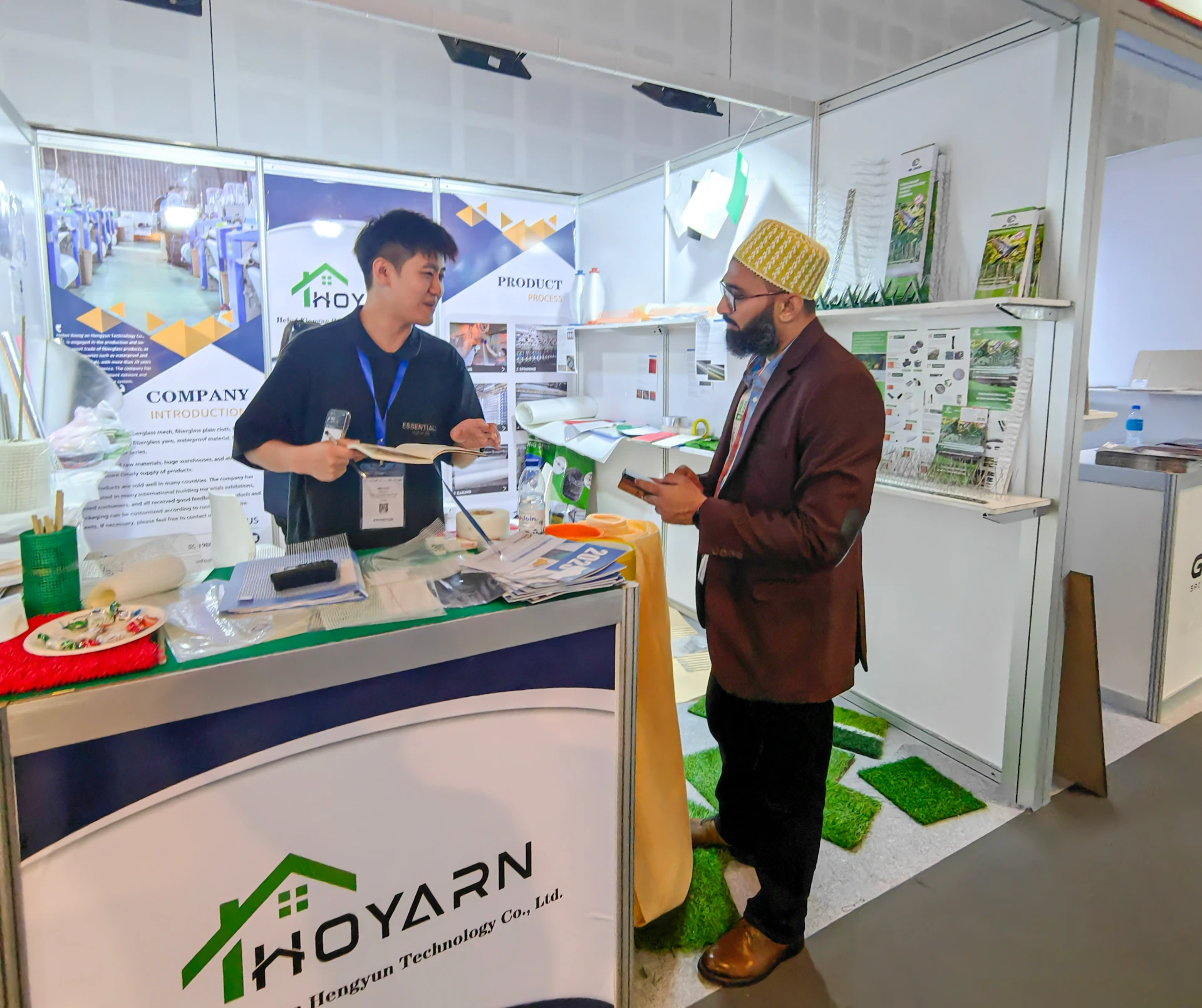
- Afrikaans
- Arabic
- Belarusian
- Bengali
- Czech
- Danish
- Dutch
- English
- Esperanto
- Estonian
- Finnish
- French
- German
- Greek
- Hindi
- Hungarian
- Icelandic
- Indonesian
- irish
- Italian
- Japanese
- kazakh
- Rwandese
- Korean
- Kyrgyz
- Lao
- Latin
- Latvian
- Malay
- Mongolian
- Myanmar
- Norwegian
- Persian
- Polish
- Portuguese
- Romanian
- Russian
- Serbian
- Spanish
- Swedish
- Tagalog
- Tajik
- Thai
- Turkish
- Turkmen
- Ukrainian
- Urdu
- Uighur
- Uzbek
- Vietnamese
Exploring the Benefits of Various Artificial Turf Layering Techniques for Optimal Aesthetics and Durability
Nov . 08, 2024 07:28 Back to list
Understanding Fake Grass Layers A Comprehensive Guide
In recent years, the popularity of synthetic turf—or artificial grass—has surged, becoming a preferred choice for both residential and commercial landscapes. One of the key aspects contributing to its appeal is the different layers that make up these fake grass products. Understanding these layers can significantly enhance your knowledge of synthetic turf, ensuring you make informed decisions when choosing the right option for your needs.
What is Fake Grass?
Fake grass is a synthetic substitute for natural grass, designed to mimic its appearance and feel. It is used in various applications, from sports fields and playgrounds to residential lawns and decorative areas. Fake grass is made from a combination of synthetic materials, typically polyethylene, polypropylene, or nylon, and it comes in various colors and textures, simulating the look of real grass.
The Layers of Fake Grass
1. Sub-Base Layer The foundation of artificial grass is the sub-base layer, which is crucial for drainage and stability. This layer is typically composed of crushed stone or gravel, providing a solid surface that helps prevent flooding and promotes proper water runoff. It is essential for maintaining the integrity of the turf over time, as it absorbs impact and reduces the risk of uneven surfaces.
2. Aggregate Layer Above the sub-base, an aggregate layer is laid out, consisting of sand or crumb rubber. This layer plays a vital role in providing cushioning and support to the grass blades, making the surface softer and more enjoyable to walk or play on. It also helps to stabilize the synthetic grass, ensuring that it remains securely in place, even under heavy foot traffic.
3. Turf Layer The most visible and perhaps the most crucial layer is the turf layer itself. This is where the magic happens—the artificial grass blades. Typically made from high-quality, UV-stabilized polyethylene or polypropylene, this layer comes in various pile heights and densities to simulate the appearance of natural grass. The combination of colors and textures can make it nearly indistinguishable from real grass, allowing homeowners and landscapers to achieve the desired aesthetic.
fake grass layers

4. Infill Layer Infill is an optional but often recommended layer that is applied to the turf itself. It consists of small granules, such as sand, rubber, or a blend of both, which are distributed across the surface. The primary purpose of the infill layer is to weigh down the turf and keep the blades upright, enhancing their realistic appearance. Additionally, it provides cushioning, reduces heat absorption, and helps to control odors, especially in areas frequented by pets.
5. Backing Layer Finally, the backing layer is essential for the overall structure and durability of the turf. It is laminated on the underside of the grass and is typically made from a strong, durable material designed to withstand varying weather conditions. The backing layer also facilitates drainage, allowing water to flow freely through the synthetic turf to the sub-base below.
Benefits of Fake Grass Layers
The layered design of fake grass offers numerous advantages. First and foremost, it significantly reduces maintenance needs, eliminating the need for mowing, watering, and fertilization—a boon for environmentally-conscious homeowners. Furthermore, the durability and resilience of synthetic turf make it a cost-effective option in the long run, especially for sports fields and playgrounds subject to heavy use.
Additionally, fake grass can withstand extreme weather conditions, maintaining its vibrant appearance without wilting or browning during droughts or heavy rains. With proper installation and maintenance, synthetic grass can last for many years, providing a pristine and functional outdoor space.
Conclusion
Understanding the various layers of fake grass is essential for anyone considering installing synthetic turf. From the supportive sub-base to the realistic turf and effective infill layers, each component plays a significant role in creating a durable, functional, and visually appealing surface. As the demand for low-maintenance landscaping solutions continues to grow, fake grass offers an attractive alternative that benefits both homeowners and the environment.
-
The Benefits of Artificial Turf for Indoors
NewsJul.15,2025
-
How Artificial Grass Suppliers Ensure Quality Products
NewsJul.15,2025
-
Artificial Grass and Pets: A Space for Relaxation
NewsJul.08,2025
-
Balcony & Outdoor Decoration with Artificial Grass
NewsJul.08,2025
-
Best Indoor Artificial Grass for Home
NewsJul.07,2025
-
Best Pet Turf for Dogs: Safe & Durable Artificial Grass Options
NewsJul.07,2025
Products categories









